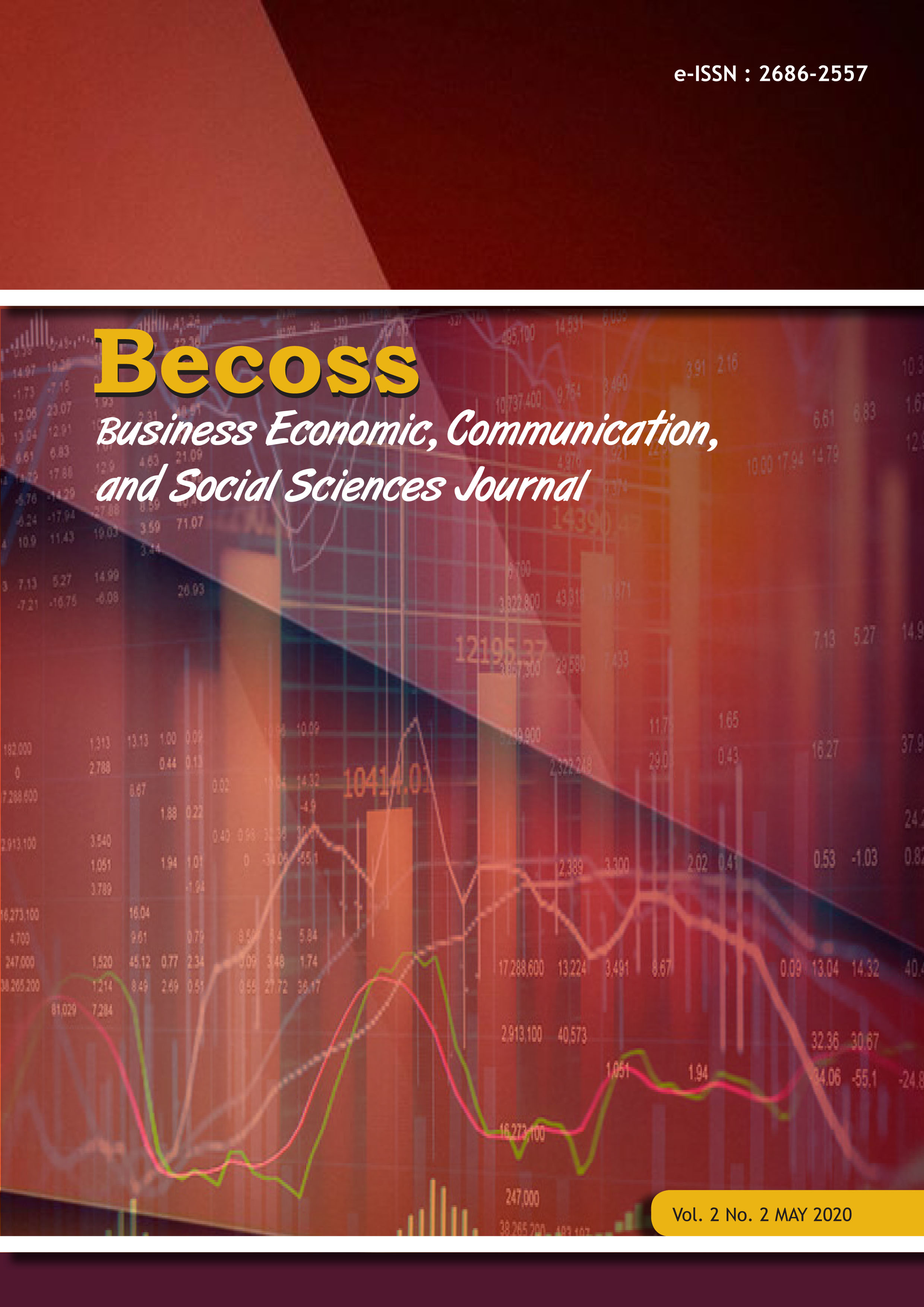Form Follows Culture: Symbolic Feng Shui Logo Design in the Greater China Region
DOI:
https://doi.org/10.21512/becossjournal.v2i2.6386Keywords:
Culture-inspired design, Symbolic Feng Shui Logo, Form follows Culture, Logo design, The Greater China regionAbstract
The visual identity of a logo has always been one of the major means of expression of social values, and cultural preferences in a particular society. Hence, each area and region logo’s design aesthetic is a style characterized by a particular cultural influence that introduces its principles and canons. Accordingly, a logo is not just a representation of a company or business, in order to fully serve its purpose, the logo representation must illustrate what the company does as well as be able to echo with the social, cultural and geographical features of the targeted region. In this paper, to respond to the research scholarly interest in the cultural influences on design, the researcher has made an attempt to study the influence of Feng Shui on logo design in the Greater China region. Based on an in-depth visual-based survey on banks’ logo design in the Greater China region, the author identified in this paper one unique design characteristic, namely Symbolic Feng Shui logo design. The result showed that (1) there is substantial cultural values and preference for the logo with the influence and application of Feng Shui. (2) Logos based on concepts and forms (particularly ancient Chinese coins) found in Feng Shui were the most preferred visual representation used by banks in the Greater China region. (3) The Symbolic Feng Shui logo as a unique design language has developed into its distinctive style. It is hoped that this paper will provide insights into an understanding of the impact of traditional culture on modern design, particularly on Feng Shui culture-inspired logo design in the Greater China region.
References
Afzal, A. (2017). How culture influences design. Retrieved from http://Creativeword.uk.com/blog/localization/culture-influences-design
Ashkenazy, G. (2013). Chinese coins and bank logos. Retrieved from http://primaltrek.com/blog/2013/02/10/chinese-coins-and-bank-logos/
Baldwin, C. D. (2016). Till death do us part ‘filthy rich’. Retrieved from https://www.kickstarter.com/projects/literaturist/ til-death-do-us-part-filthy-rich
Bao, Y., et al. (2016). Aesthetic preferences for eastern and western traditional visual art: Identity matters, Frontiers in Psychology. Retrieved from https://www.ncbi.nlm.nih.gov/pmc/articles/PMC5071313/
Beauchesne, M. (2014). Simple feng shui tips for everyday life. Retrieved from http://kheopsinternational.com/blog/ simple-feng-shui-tips-for-everyday-life/
Bruyn, S. T. (2002). Art and aesthetics in action. Retrieved from https://www2.bc.edu/severyn-bruyn/Critique.html
Carlson, D., & Richards, B. (2011). Design+culture: A return to fundamentalism, David Report, no. 13. Retrieved from http://davidreport.com/the-report/design-culture-time-cultural-fundamentalism/
Chen, G.- M. (2007). The impact of feng shui on Chinese Communication, China Media Research, vol. 3, no. 4, pp. 102-109.
Cisek, J. (2015). Top feng shui tips for auspicious business cards design and why the business card is as mighty as the samurai sward?. Retrieved from http://www.fengshuilondon.net/feng-shui-tips-for-business-cards/top-feng-shui-tips-for-auspicious-business-cards-design-and-why-the-business-card-is-as-mighty-as-the-samurai-sward
Craven, J. (2019). The meaning of ‘form follows function’: The famous architectural phrase said design should reflect activities. Retrieved from https://www.thoughtco.com/form-follow-function-177237
Du Gay, P., et al. (2013). Doing cultural studies: The story of the Sony Walkman, 2nd edition, Los Angeles, CA: Sage Publications.
Hormia, R. (2018). Form follows culture? - Exploring a design-driven cultural strategy process for new venture brand identity revitalisation. Case: Kämmen, a Nordic accessory brand, Master’s thesis, Aalto University. Retrieved from https://aaltodoc.aalto.fi/handle/123456789/36115?locale-attribute=en
Jeremiah. (2010). Form follows function – but should it? Retrieved from https://bitchinarch.wordpress.com/2010/10/25/ form-follows-function-but-should-it/
Kacharia, N. (2019). Why designers must know that culture influences UX?, Retrieved from https://blog.templatetoaster.com/designers-must-know-culture-influences-ux/
Kleijn Brand Agency. (2015). Form follows function or form follows context?. Retrieved from http://www.flaviokleijn.com/ blog/2015-03-19-form-follows-function-or-form-follows-context/
Lee, K. P. (2004). ‘Design methods for cross-cultural collaborative design project’, in J. K. Redmond, D. Durling & A. De Bono (eds.), Proceedings of Design Research Society International Conference, Melbourne Vic Australia: Monash University.
Lin, R. T. (2007). Transforming Taiwan aboriginal cultural features into modern product design: A case study of a cross-cultural product design model, International Journal of Design, vol. 1, no. 2, pp. 45-53.
Redding, D. (2013. Subconscious meaning in logo design. Retrieved from http://www.magneticstate.com/blogdept/ logo-design-conscious-meaning-versus-subconscious-meaning/
Robert, A. (2014). Cultural and geographical influences on logo designing. Retrieved from http://designrfix.com/logo/cultural-geographical-influences-logo-designing
Seligman, J. (2013). Form follows culture. Retrieved from http://www.neverwhatyouthink.com/form-follows-culture/
Spacey, J. (2016). What is form follows function?. Retrieved from https://simplicable.com/new/form-follows-function
Tchi, R. (2019). Feng shui tips for the design of business logo. Retrieved from https://www.thespruce.com/feng-shui-tips-for-the-design-of-business-logo-1274776
Wu, S. (2018). How is ‘form follows function’ to 21st century design?. Retrieved from https://uxdesign.cc/how-is-form-follows-function-to-21st-century-design-335737a73305
Downloads
Published
How to Cite
Issue
Section
License
Authors who publish with this journal agree to the following terms:
- Authors retain copyright and grant the journal right of first publication with the work simultaneously licensed under a Creative Commons Attribution License - Share Alike that allows others to share the work with an acknowledgment of the work's authorship and initial publication in this journal.
- Authors are able to enter into separate, additional contractual arrangements for the non-exclusive distribution of the journal's published version of the work (e.g., post it to an institutional repository or publish it in a book), with an acknowledgment of its initial publication in this journal.
- Authors are permitted and encouraged to post their work online (e.g., in institutional repositories or on their website) prior to and during the submission process, as it can lead to productive exchanges, as well as earlier and greater citation of published work.
USER RIGHTS
All articles published Open Access will be immediately and permanently free for everyone to read and download. We are continuously working with our author communities to select the best choice of license options, currently being defined for this journal as follows: Creative Commons Attribution-Share Alike (CC BY-SA)






